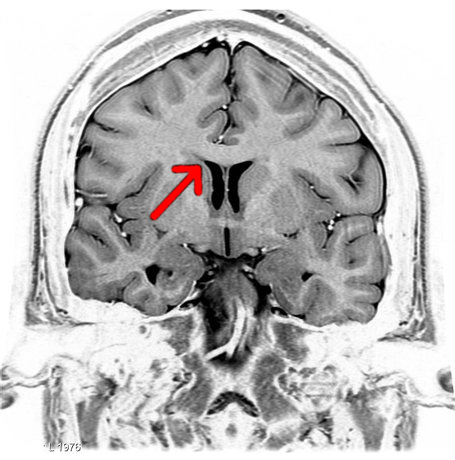Answer: The corpus callosum is the dense white matter tract that spans both hemispheres. Its main function is to allow communication between the left and right hemispheres of the brain.
Although the brain was initially conceived of as being one single organ, we are learning now that each half of the brain is able to function independently from the other. With a few major exceptions, the left brain can mostly carry out the same functions as the right brain and vice versa.
Each hemisphere of the brain is able to communicate with the other hemisphere. Communication occurs at the level of neurons, when large groups of cells send action potentials across long distances using heavily myelinated axonal pathways, also called white matter tracts. The largest white matter tract in the human brain is the corpus callosum. It is made up of more than 200 million axons.
Anatomically speaking, the corpus callosum is the ventral base of the midline fissure (longitudinal fissure), the major division that separates the left and the right hemisphere. The corpus callosum also makes up the dorsal most portion of the lateral ventricles, the large CSF-filled spaces in the brain.
The corpus callosum can be divided into roughly four divisions. From rostral (anterior) most to causal (posterior) most, they are as follows:
Rostrum. This is the front most section of the corpus callosum and it connects the the orbital surfaces of the left and right frontal lobes.
Genu. The genu is the curved portion in the rostral aspect of the structure. It connects the medial and lateral surfaces of the frontal lobes.
Trunk. The trunk portion connects the left and right temporal and parietal lobes.
Splenium. At the posterior most end of the corpus callosum, the splenium connects the two occipital lobes.
All four lobes are connected across the hemispheres by the corpus callosum at some point.
Corpus callosum in stroke
As a structure with high metabolic demand, the corpus callosum gets rich blood flow innervation from the circulatory system. Specifically, the structure get its blood flow from the capillaries that branch of the pericallosal arteries, which stem off the anterior cerebral artery. Blood flow is very robust with redundancy of innervation, therefore the corpus callosum is rarely affected in stroke or other infarct.
Agenesis of the corpus callosum
In some cases, the white matter connection does not form between the two hemispheres. Often times this occurs in rare birth defects. Researchers currently don't understand why agenesis of the corpus callosum occurs. They believe that if neural development is affected early in the fetus, especially between the 3rd and 12th weeks of pregnancy.
Children born with agenesis of the corpus callosum generally are generally healthy. They may have neurotypical levels of intelligence, but they may experience subtle differences in other behaviors.
Genetic factors that get damaged during development, prenatal exposure to toxins or metabolic disorders may all contribute to the likelihood that callosal agenesis develops.
It has also been noted that prenatal cocaine exposure can lead to callosal agenesis (Brain and ocular abnormalities in infants with in utero exposure to cocaine and other street drugs)
